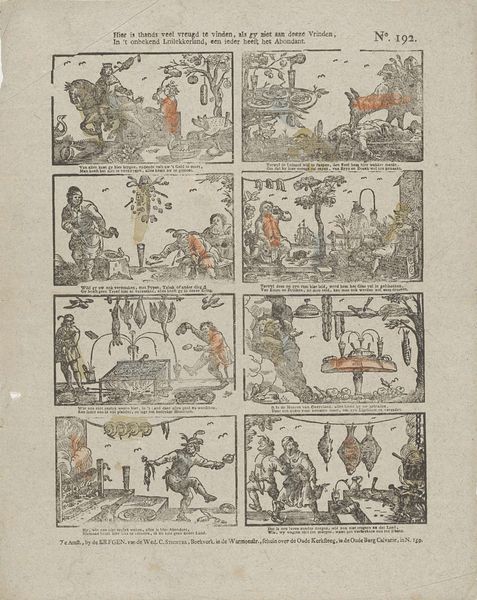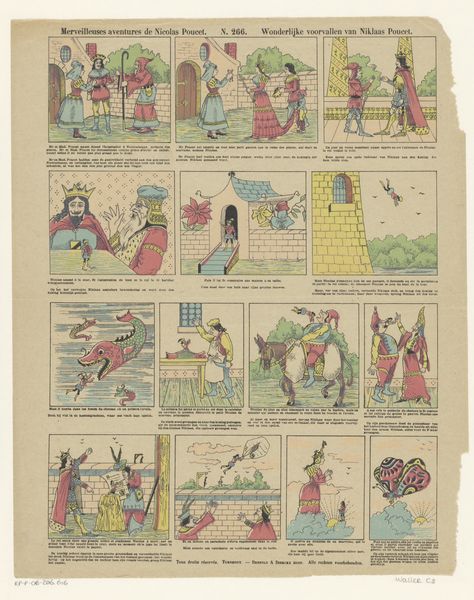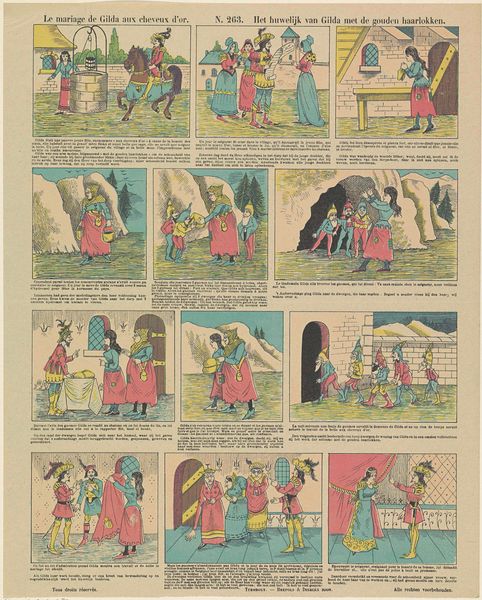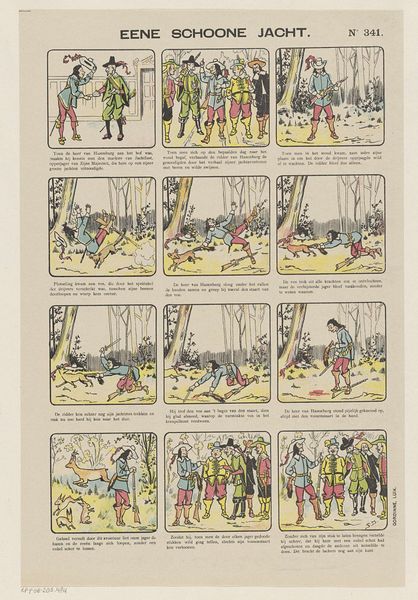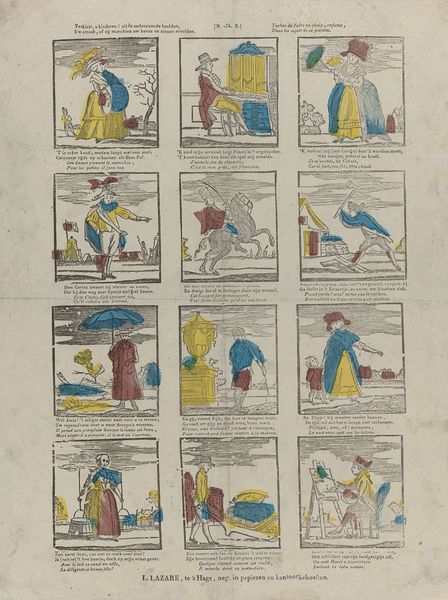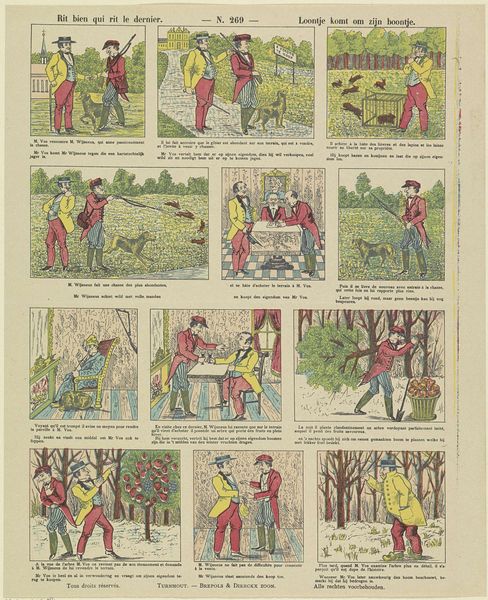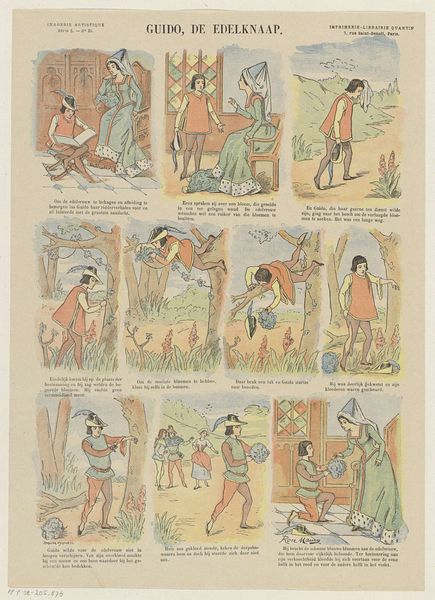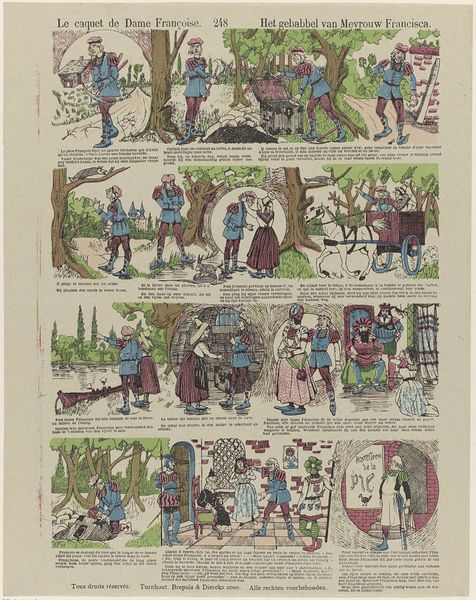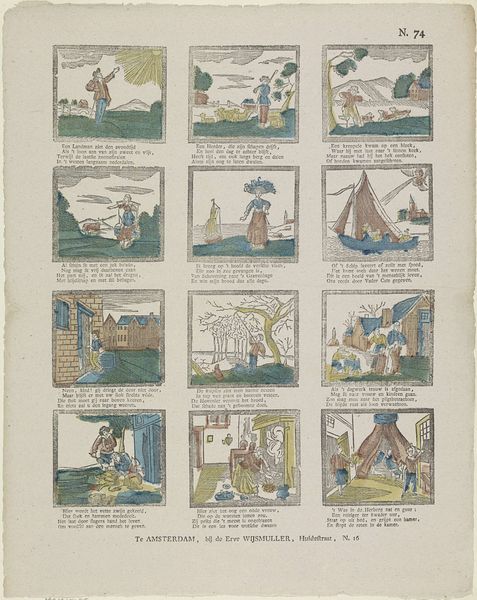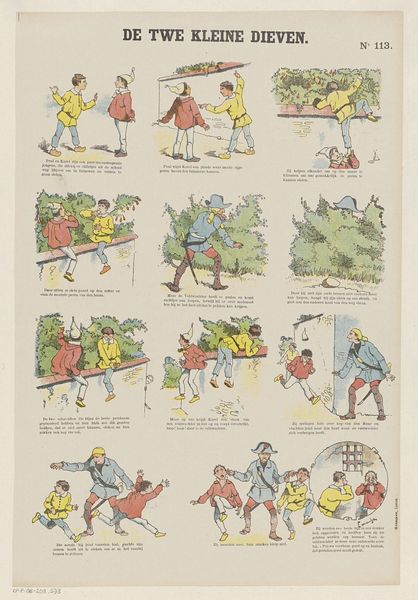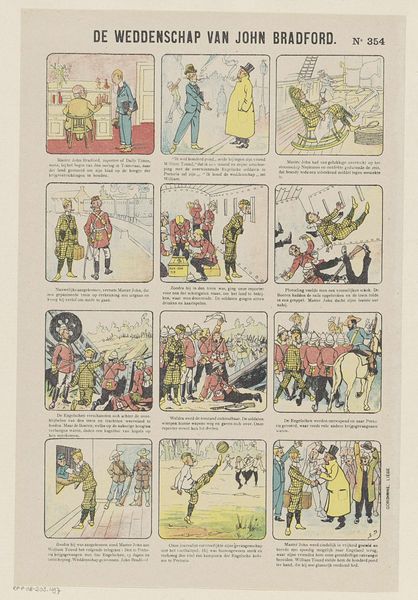
print, watercolor
# print
#
watercolor
#
folk-art
#
symbolism
#
watercolor
Dimensions: height 368 mm, width 265 mm
Copyright: Rijks Museum: Open Domain
Curator: Here we have “De twee bultenaars”, or “The Two Hunchbacks,” a late 19th-century print using watercolor by Maurice Radiguet. It depicts a folk tale across a series of panels, almost like a comic strip. Editor: It definitely gives me a nostalgic, fairytale feeling, like something out of my childhood. The colors are gentle, almost dreamlike, and the characters have a charmingly strange appearance. Curator: Radiguet was known for blending artistic talent with themes rooted in folklore and popular imagery of the time. He navigated the artistic currents that aimed to democratize art through prints, bringing narratives directly to the public. It reflects a shift toward embracing accessible artistic formats, breaking from elite art establishments. Editor: Looking at this now, through a contemporary lens, I can’t help but consider how the racialized depictions in folk art contribute to harmful stereotypes. The characters with dark skin and exaggerated features, dancing around under the moonlight…it definitely raises some difficult questions about representation and power. Curator: Those figures would have been typical caricatures in the popular imagination. It is important that we now view these depictions within the framework of evolving cultural sensitivities. These images were widely circulated and contributed to public opinion and assumptions about racial others. Editor: Exactly. By showing them in context, it opens dialogue. Radiguet, intentionally or not, put into visual form stories circulating and shaping society. Critically viewing this can promote important consciousness-raising. Curator: Indeed. By studying prints such as this, we gain crucial insight into the era’s perceptions, biases, and how certain groups were viewed—or rather, caricatured. They represent artifacts ripe for critical evaluation of historic values. Editor: Thanks for adding so much needed context and helping look beyond just the cute veneer of this illustrated tale. I leave viewing this piece, not only thinking about folk-art origins, but about how it all impacted communities back then…and sadly still informs perceptions in our own time.
Comments
No comments
Be the first to comment and join the conversation on the ultimate creative platform.
